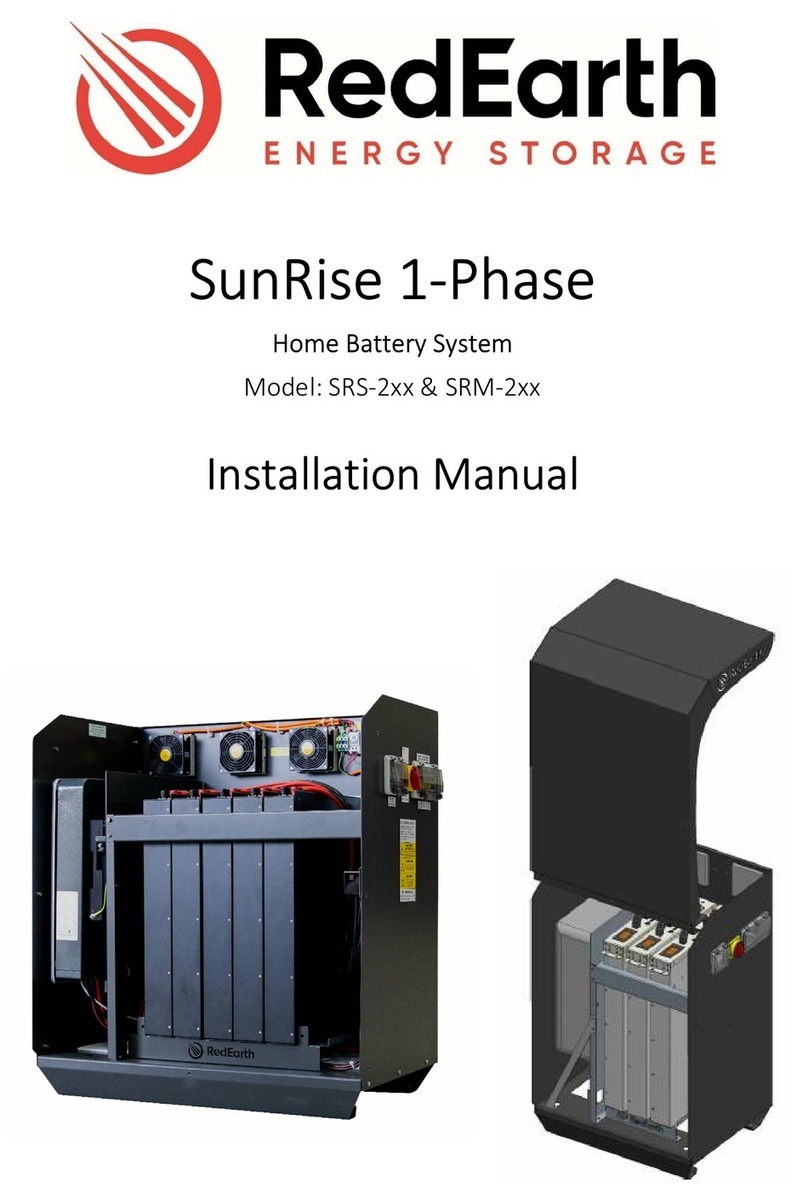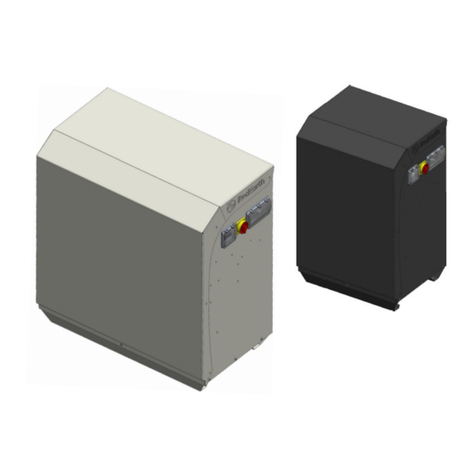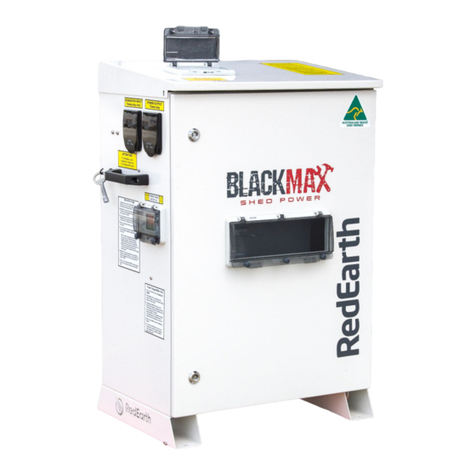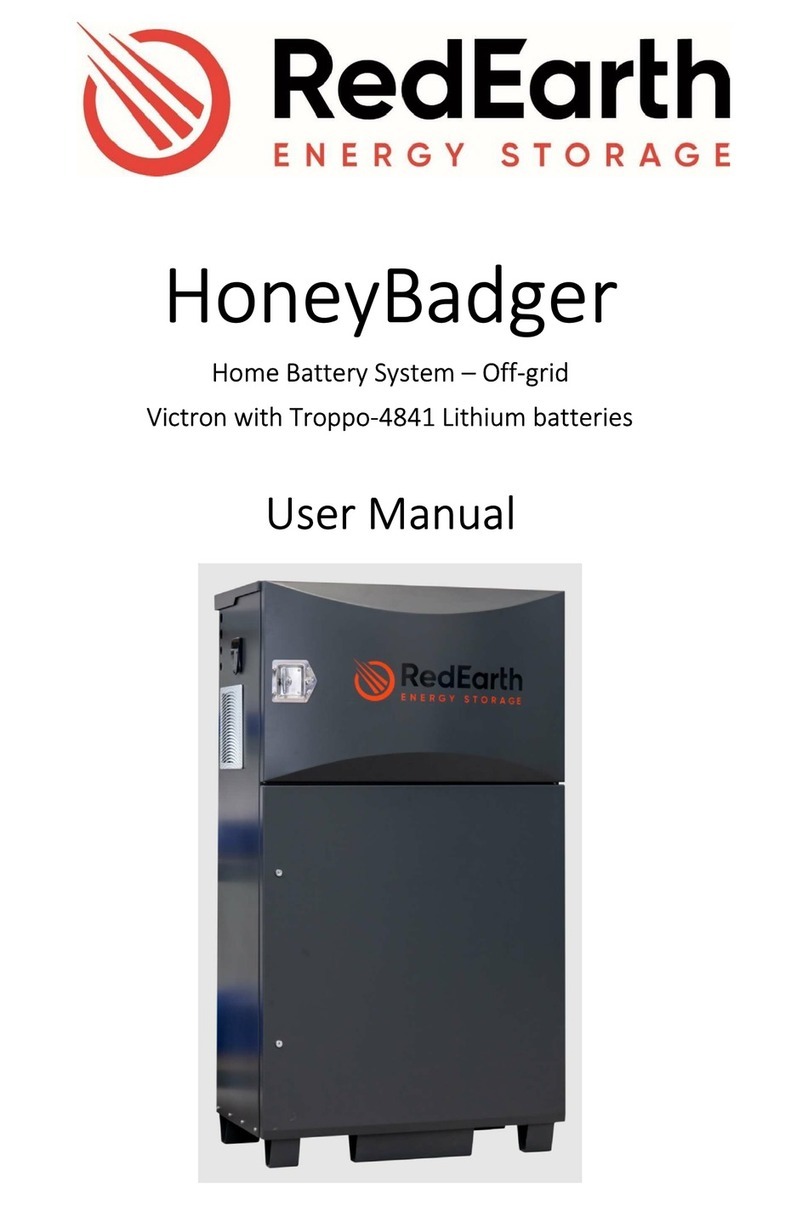
HoneyBadger_UserManual
RE_PROD_0010 Version #1 Page 9 of 19 Issue Date 28/07/2020
SmartSolar MPPT 250/100
A solar charger gathers energy from your solar panels and stores
it in your batteries. Using the latest, fastest technology,
SmartSolar maximises this energy-harvest, driving it intelligently
to achieve full charge in the shortest possible time. SmartSolar
maintains battery health, extending its life.
An MPPT controller attempts to harvest power from the array
near its Maximum Power Point, whilst supplying the varying
voltage requirements of the battery plus load. Thus, it essentially
decouples the array and battery voltages, so that there can be a 12 volt battery on one side of the
MPPT charge controller and two 12 Vpanels wired in series to produce 36 volts on the other. If
connected to a PV array with a substantially higher nominal voltage than the battery voltage,
an MPPT controller will therefore provide charge current even at very high cell temperatures or in
low irradiance conditions when a PWM controller would not help much.
Bluetooth Smart built-in: dongle not needed- The wireless solution to set-up, monitor and update
the controller using Apple and Android smartphones, tablets or other devices.
VE.Direct- For a wired data connection to a Color Control panel, PC or other devices
Ultra-fast Maximum Power Point Tracking (MPPT) - Especially in case of a clouded sky, when
light intensity is changing continuously, an ultra-fast MPPT controller will improve energy harvest
by up to 30% compared to PWM charge controllers and by up to 10% compared to slower MPPT
controllers.
Load output - Over-discharge of the battery can be prevented by connecting all loads to the load
output. The load output will disconnect the load when the battery has been discharged to a pre-set
voltage (48V model: interface with a relay). Alternatively, an intelligent battery management
algorithm can be chosen: see Battery Life. The load output is short circuit proof.
Battery Life: intelligent battery management- When a solar charge controller is not able to
recharge the battery to its full capacity within one day, the result is often that the battery will
continually be cycled between a ‘partially charged’ state and the ‘end of discharge’ state. This
mode of operation (no regular full recharge) will destroy a lead-acid battery within weeks or
months. The Battery Life algorithm will monitor the state of charge of the battery and, if needed,
day by day slightly increase the load disconnect level (i.e. disconnect the load earlier) until the
harvested solar energy is sufficient to recharge the battery to nearly the full 100%. From that point
onwards the load disconnect level will be modulated so that a nearly 100% recharge is achieved
about once every week.
Programmable battery charge algorithm - See the software section on the Victron website for
details.
Programming, real-time data and history display options - Modern Apple and Android
smartphones, tablets, macbooks and other devices: see the VE.Direct Bluetooth Smart dongle and
the MPPT app discovery sheet for screenshots.
What is in my HoneyBadger




































